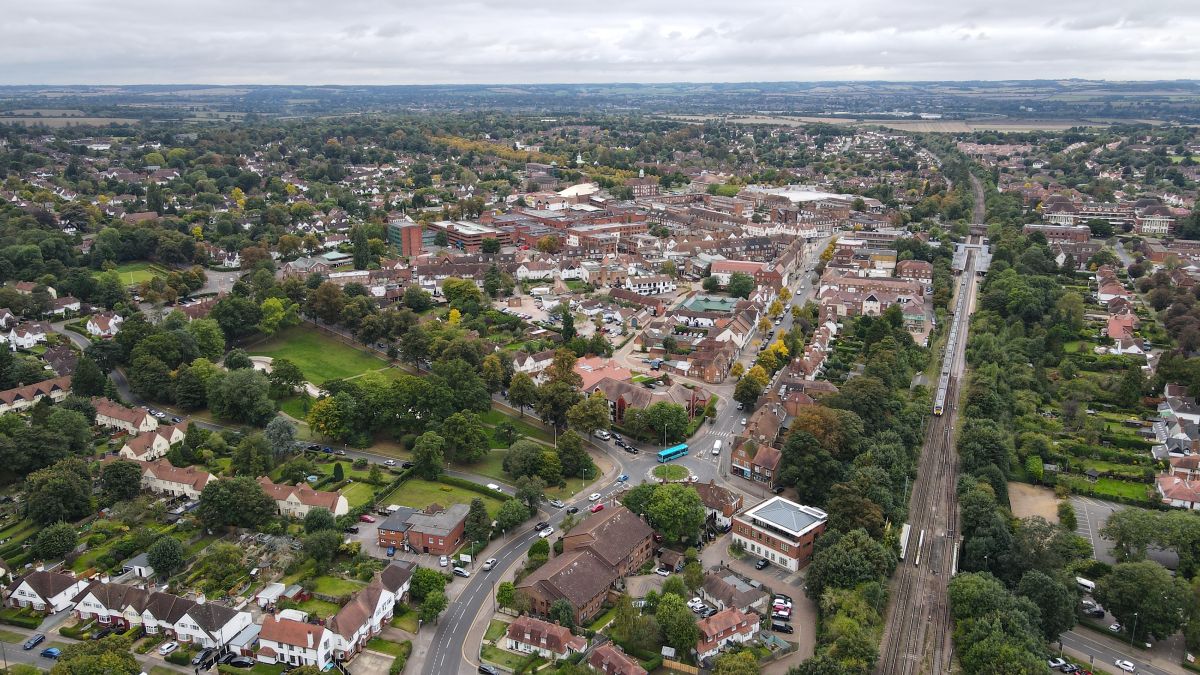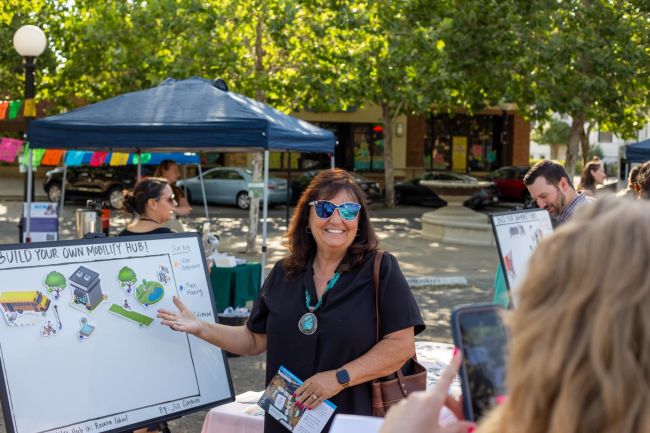What can we learn from Letchworth Garden City in an era focused on housebuilding?
As the new Labour Government eyes its 1.5 million housebuilding target the obvious question is where will these homes go?

As the new Labour Government eyes its 1.5 million housebuilding target the obvious question is where will these homes go? As part of our wider series looking at how the UK will build more and better homes, here we explore a case of sustainable, consensus-based development in Letchworth Garden City.
In a recent article in the Telegraph, Secretary of State for Housing, Communities and Local Government Angela Rayner highlighted Letchworth Garden City in North Hertfordshire as an example of a post-war new town that Labour will draw inspiration from when pursuing its own development and planning policies.
The Secretary of State is right to think of Letchworth as an example, not just of new town success but also a place where sustainable, well-thought out and community-approved development can happen.
In July a Strategic Masterplan was approved by North Herts Council for LG1, a site on the northern edge of Letchworth which is set to host 900 residential dwellings, a 2FE primary school and a new neighbourhood centre with retail, community and medical facilities. It will now be adopted as a material consideration for any future planning decisions relating to the site.
Since 2016 Steer has been involved in supporting the Letchworth Garden City Heritage Foundation (LGCHF) in their pursuit to expand the town in a way that is amenable to residents and in keeping with local character. This approach helps to smooth issues in the planning process and achieve community buy-in, but how did we do it?
Steer’s role in LG1
All large strategic sites within North Hertfordshire are required to prepare a Strategic Masterplan, that consider issues of consistent urban design, biodiversity, green infrastructure, flood risk and housing need.
Steer was integral to the ‘movement framework’ of LG1s Strategic Masterplan which sets out the existing transport context in Letchworth, showing how the site will function in a manner that encourages active travel, public transport mode shift and manages congestion.
Our first step was to produce a Transport and Accessibility Report that included a comprehensive review of existing travel trends and multi-modal transport conditions within Letchworth and relevant surrounding areas. We identified key destinations within and around Letchworth that future occupants of LG1 would need to access and identified the key public transport, walking and cycling routes. Our process identified 27 urban and 9 non-urban routes to key destinations which we walked and audited over two days, appraising the quality of each of these against healthy streets criteria.
The report also set out key transport opportunities and constraints, the emerging proposed multi-modal transport strategy for the site and associated transport mitigation measures. We also submitted a successful application to the HCC Speed Management Group to reduce the speed limit on Norton Road (the location of the primary vehicle access) to 50mph.
Once the baseline studies were completed these opportunities and constraints were carried forward into the development of conceptual layout options for the strategic masterplan, identifying land use areas, key urban design and landscape principles, amenity areas and multi-modal access arrangements.
A range of public consultation events were then held across the autumn, together with workshops with the North Hertfordshire Council (NHC) and Hertfordshire County Council officers and a Design Review Panel workshop, with feedback used to identify a single preferred layout option, which was then consulted on again in the Spring.
Steer, along with the urban design architects and the landscape consultant presented various key concepts at both internal and external consultations to get buy in and seek feedback to help shape the development.
What can we learn from Letchworth Garden City?
LGCHF is a self-funding charitable organisation who re-invest income from their property portfolio for the long-term benefit of communities in Letchworth, working to enhance and maintain the world’s first garden city. While this body’s governance role is a rarity in the UK their approach to well-connected, sustainable and consensus-led homebuilding is a much-needed example in today’s planning and development landscape.
Housebuilding can be contentious for communities who have (sometimes justified) concerns for local services, infrastructure and the environment. However, with UK housing stock widely agreed to be lacking (with serious social and economic consequences) if we do not find a way to build with community consent and integrated planning, we will never find space for 1.5 million houses.
Thorough consultation, consistent urban design and well-thought-out transport and environmental plans can make development planning a success and Letchworth Garden City shows this. Steer is ready to support areas all over the UK get the same results.
For more information on changes to and opportunities for planning in the UK checkout Steer’s Planning Reform Story Map. The story map offers a transport-oriented view of the updated National Planning Policy Framework (NPPF) to unlock better, greener development decisions on where new housing could be built based on existing transport links.
We would like to thank the LGCHF including David Ames (former LGCHF Executive Director – Stewardship & Development) for their excellent co-ordination of the project and refreshing approach to driving the highest possible standards for the development. We would also like to thank the consultant team that we have worked with throughout the process including Alex Robinson of RLP Ltd who is acting as Development Manager for the LGCHF, EcoResponsive Environments (Urban Design Architects) who co-ordinated the Strategic Masterplan layouts and documents, Peter Neal Consulting Ltd – the Landscape Consultant, and Kanda Consulting who co-ordinated the public consultation strategy.






















